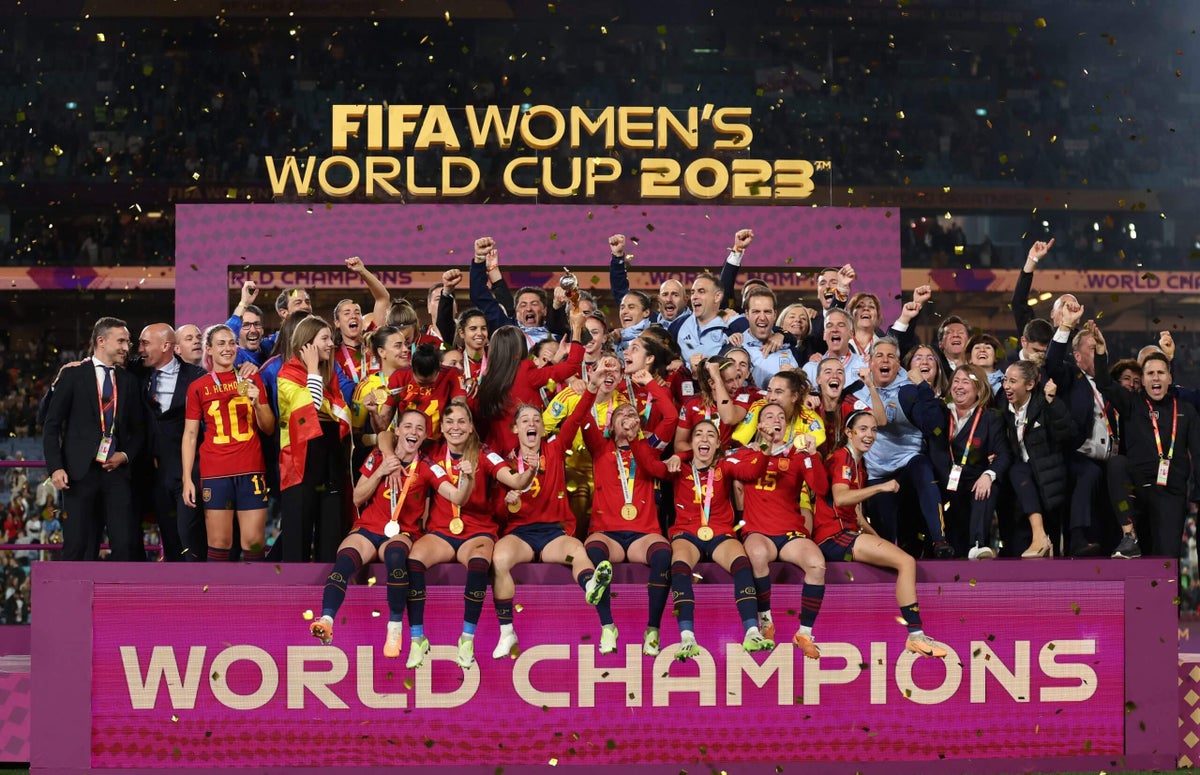

The Women’s World Cup is set to expand from 32 to 48 countries after the proposal was approved at a meeting of the FIFA Council.
The approval from the decision-making arm of FIFA, world football’s governing body, has been confirmed to The Athletic by sources with knowledge of Friday’s meeting. The Athletic reported in December that FIFA was considering the idea.
Advertisement
The expansion of the Women’s World Cup is set to come in for the 2031 tournament, which the United States is hosting. It was most recently increased from 24 teams to 32 in July 2019, following the tournament in France that year, with this coming into effect for the 2023 World Cup in Australia and New Zealand, which was won by Spain.
The move will bring the women’s tournament in line with its men’s equivalent, which was expanded to 48 nations for its 2026 edition in the U.S., Canada and Mexico. There have been controversial calls to expand that further, to 64 teams, for 2030.
The 32-team 2027 Women’s World Cup will be hosted by Brazil, with the tournament running from June 24 to July 25.
Last month, FIFA president Gianni Infantino confirmed that the U.S. and the United Kingdom are the sole respective bidders for the 2031 and 2035 Women’s World Cups.
U.S. Soccer and the Mexican Soccer Federation announced in April 2024 their intention to lodge a joint bid for the 2031 tournament. The two federations withdrew their bid for the 2027 World Cup to instead focus on 2031. Infantino did not mention Mexico but said “potentially some other Concacaf members” could be involved in 2031.
The U.S. last hosted in 2003, having previously done so four years earlier, while the U.K. — which see matches played in England, Wales, Scotland and Northern Ireland — has never hosted the finals but did host the delayed European Championship in 2022.
Friday’s FIFA Council meeting was originally slated to take place in person in Paraguay next week but was brought forward and moved to videoconference format so Infantino could accompany U.S. President Donald Trump in the Middle East.
Analysis from Meg Linehan
Expanding the Women’s World Cup to 48 teams offers potential opportunities for the growth of the women’s game in both the football and the business worlds — but that’s not to say the plan doesn’t carry risks. For all the angst over the previous expansion of the major tournament to 32 teams, the final product on the field in Australia and New Zealand in 2023 did not suffer at all. In fact, it proved to be one of the most exciting versions of the tournament, with plenty of packed stadiums and fan zones across the two countries.
Advertisement
The greater rewards lie on the commercial side, especially with both the United States and the UK eying 2031 (or 2035) bids. More games equals more revenue, more attendance, more inventory to sell against for sponsors, media rights deals, you name it. There will be limitations on the commercial side too, with fewer nations equipped to host a larger tournament. More combined bids will solve this problem, but the Women’s World Cup might lose some of what makes it so special and accessible in its existing format.
An even larger question remains at the youth levels. Currently, the Under-20 Women’s World Cup has 24 teams. If the hope is to match this tournament to the senior tournament, especially in advance of the 2031 edition for the full senior teams, that’s a massive project. That’s where there will be questions about quality on the field, in addition to the same logistical ones at senior level.
While it’s still in the discussion phase, the 48-team expansion feels like a matter of when, not if. The challenge is not just keeping the pressure on FIFA to equalize prize money if the tournament does expand, but for FIFA to actually govern and ensure its member nations are properly investing in women’s football at all levels.
(Photo: Wagner Meier/Getty Images)
This news was originally published on this post .










Be the first to leave a comment